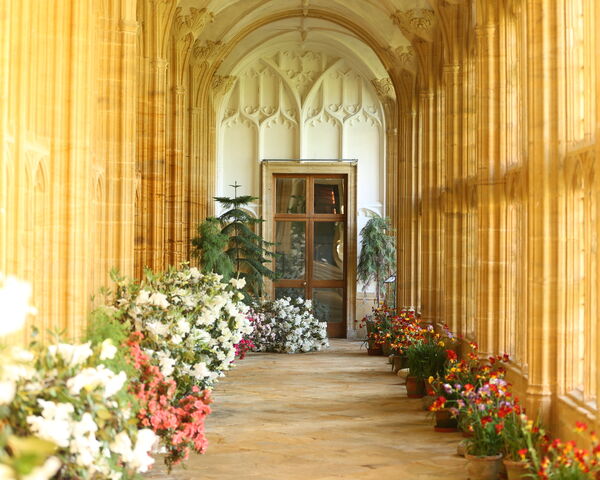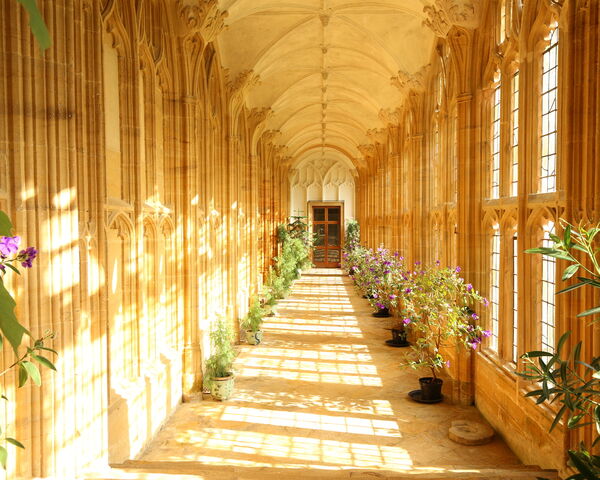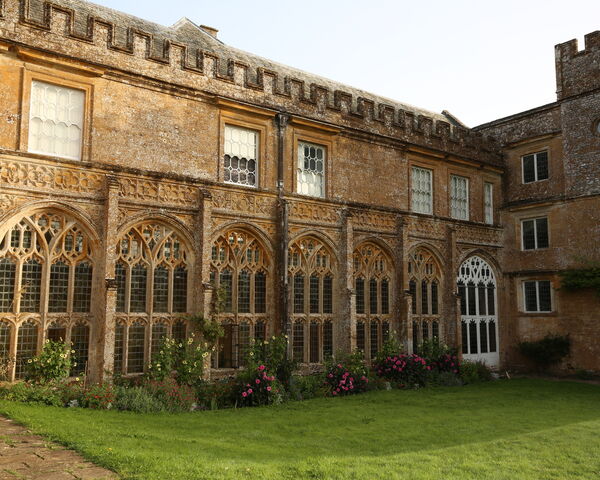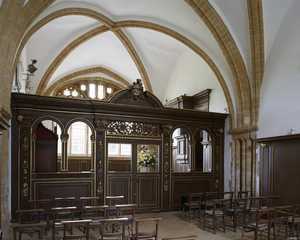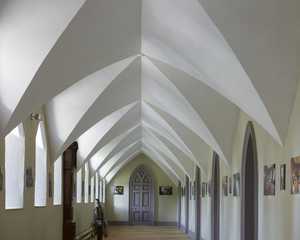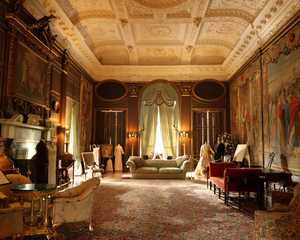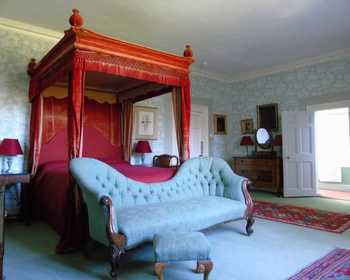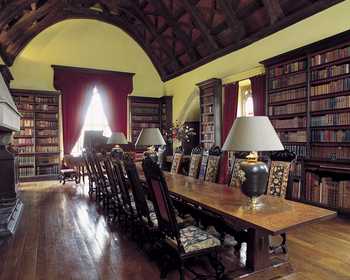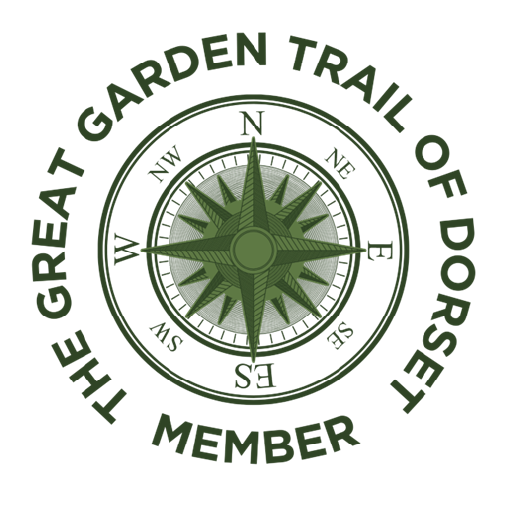The Cloisters
The Cloisters were used for walking and meditation by the monks and would once have formed a quadrangle to the Abbey Church, which stood where the front lawn is today. This one remaining side survives from the renovation pursued by Thomas Chardin about 1520, although his work on the Cloisters was left unfinished. It was rather more elaborate than the earlier construction. It can be seen by the 13th Century facing that has been left exposed by Chard in one of the bays. This is the remains of the Lavatorium where the monks had to wash their hands before entering the refectory whose doorway is immediately behind. This original facing was made of Purbeck marble with moulded bases, and panels of Bath stone.
The exterior Ham stone frieze carries shields bearing the coats of arms of families connected to the Abbey, such as the Courteneys, the Bishop of Exeter and the Pouletts. Thomas Chard’s initials also appear here.


